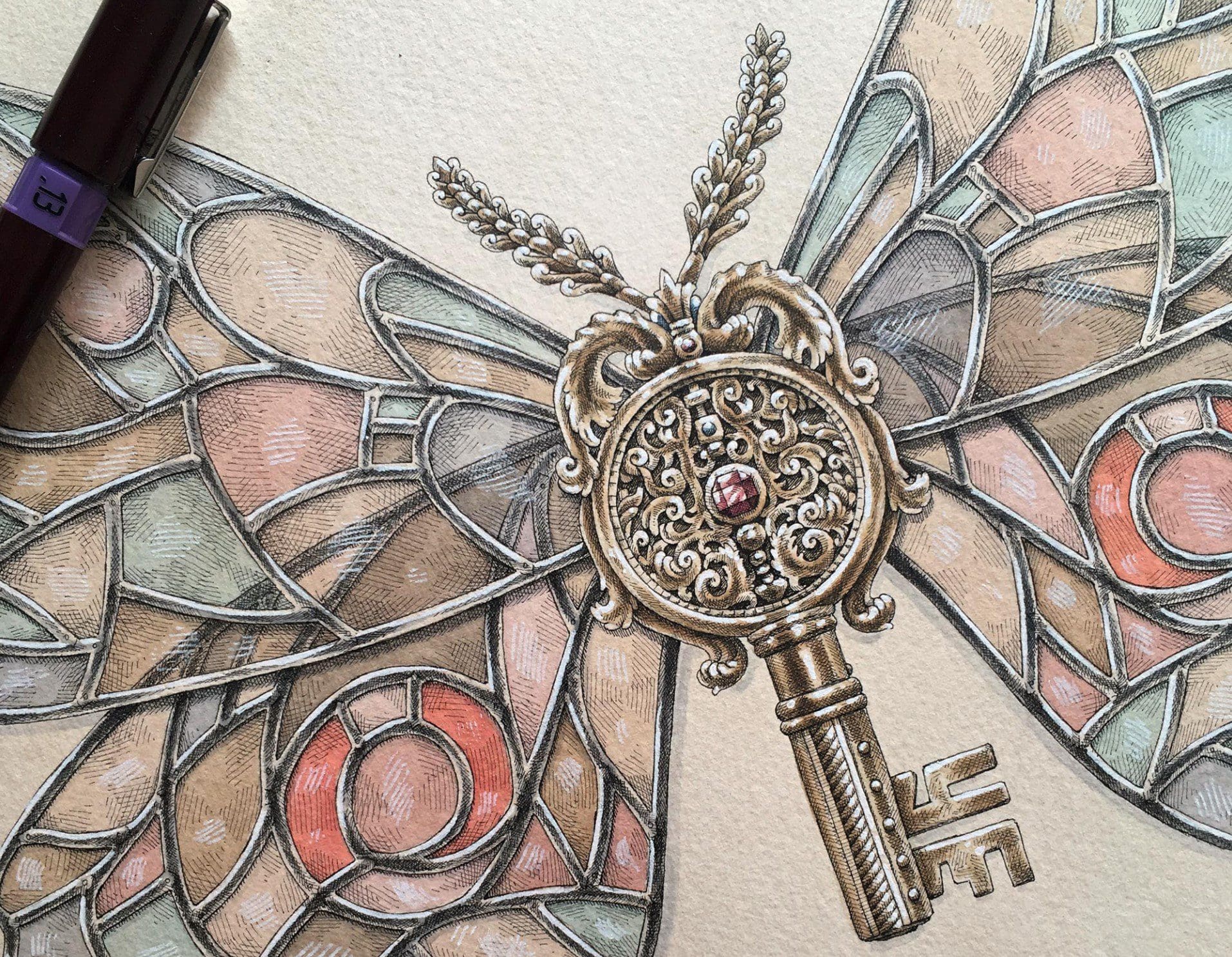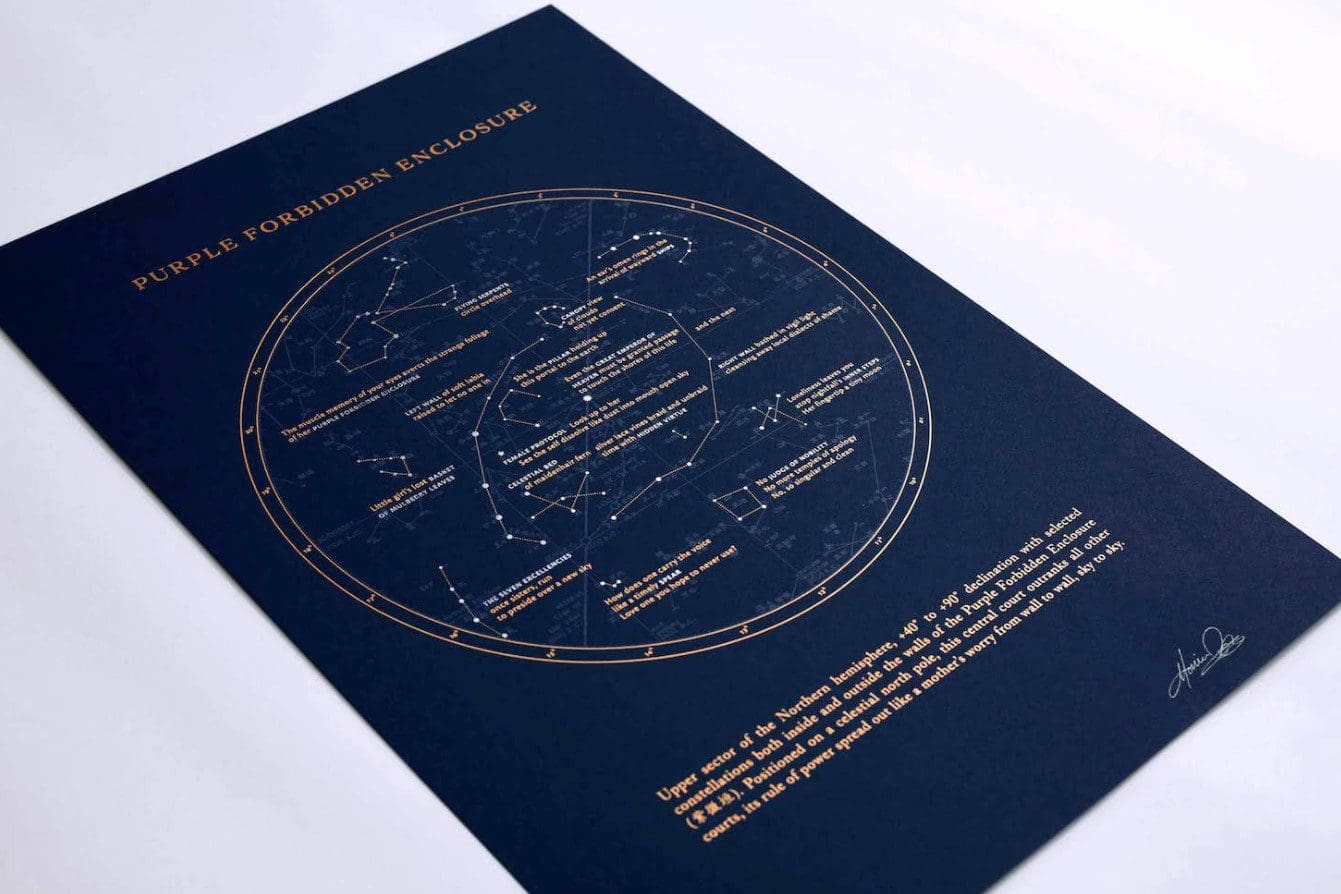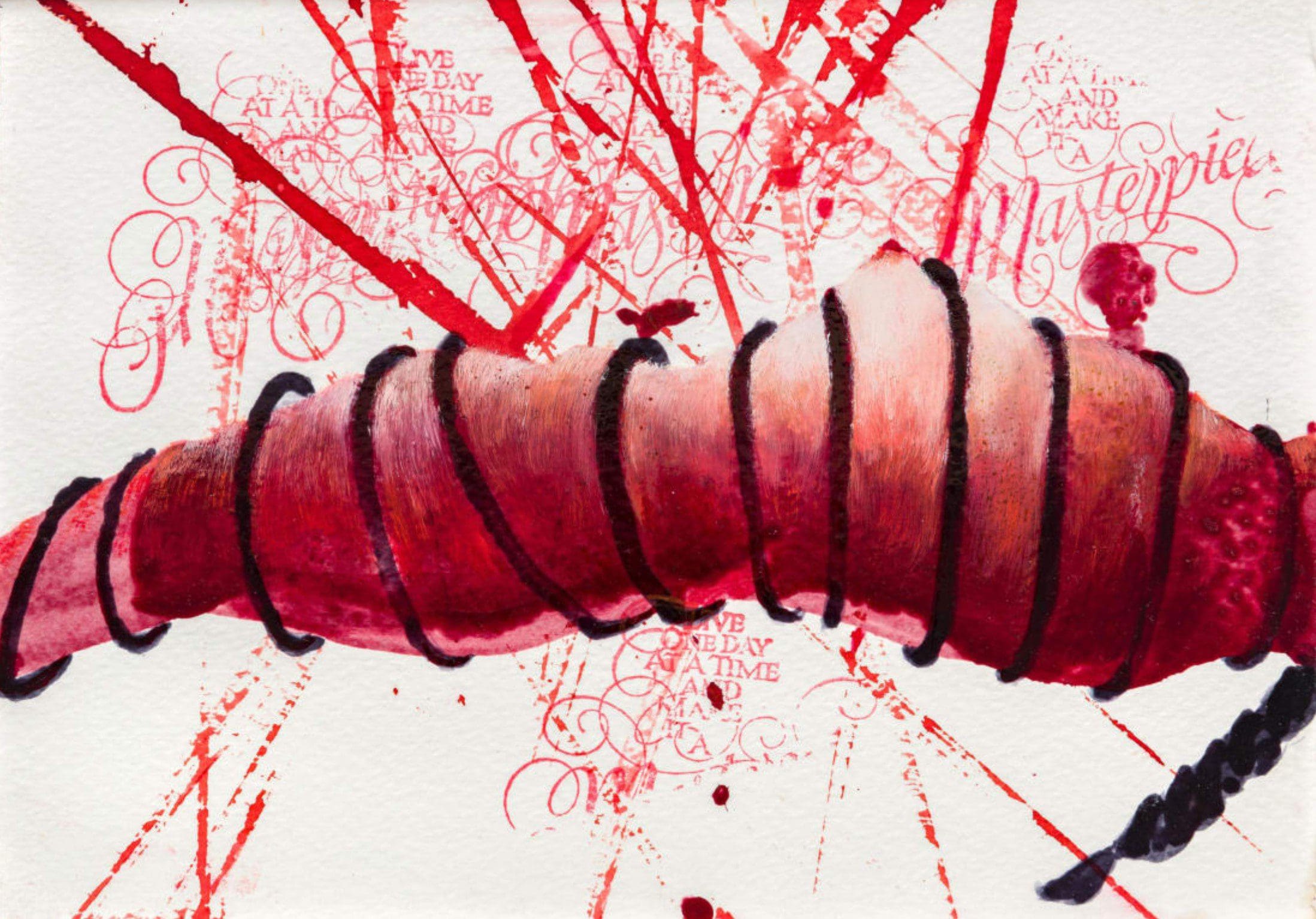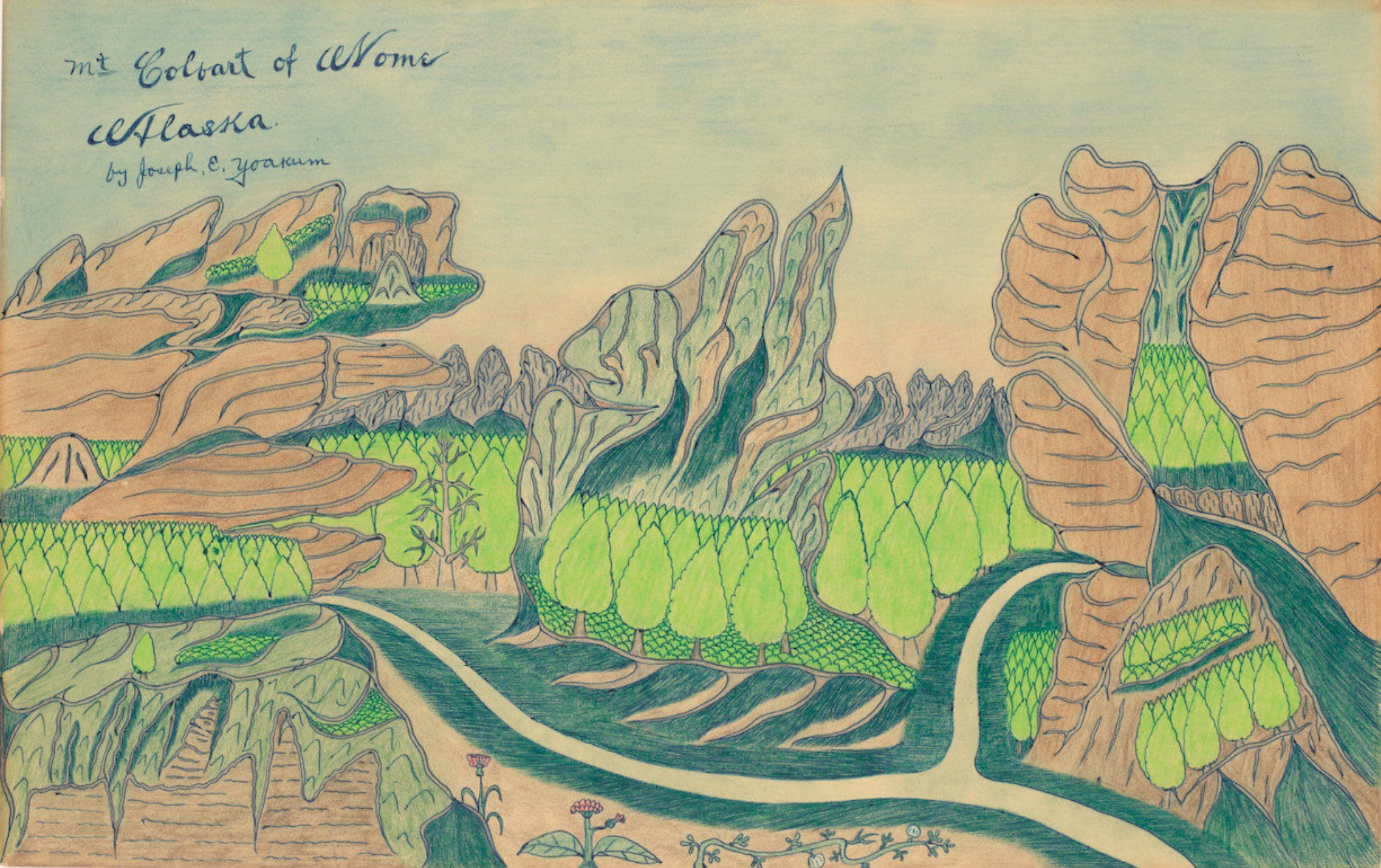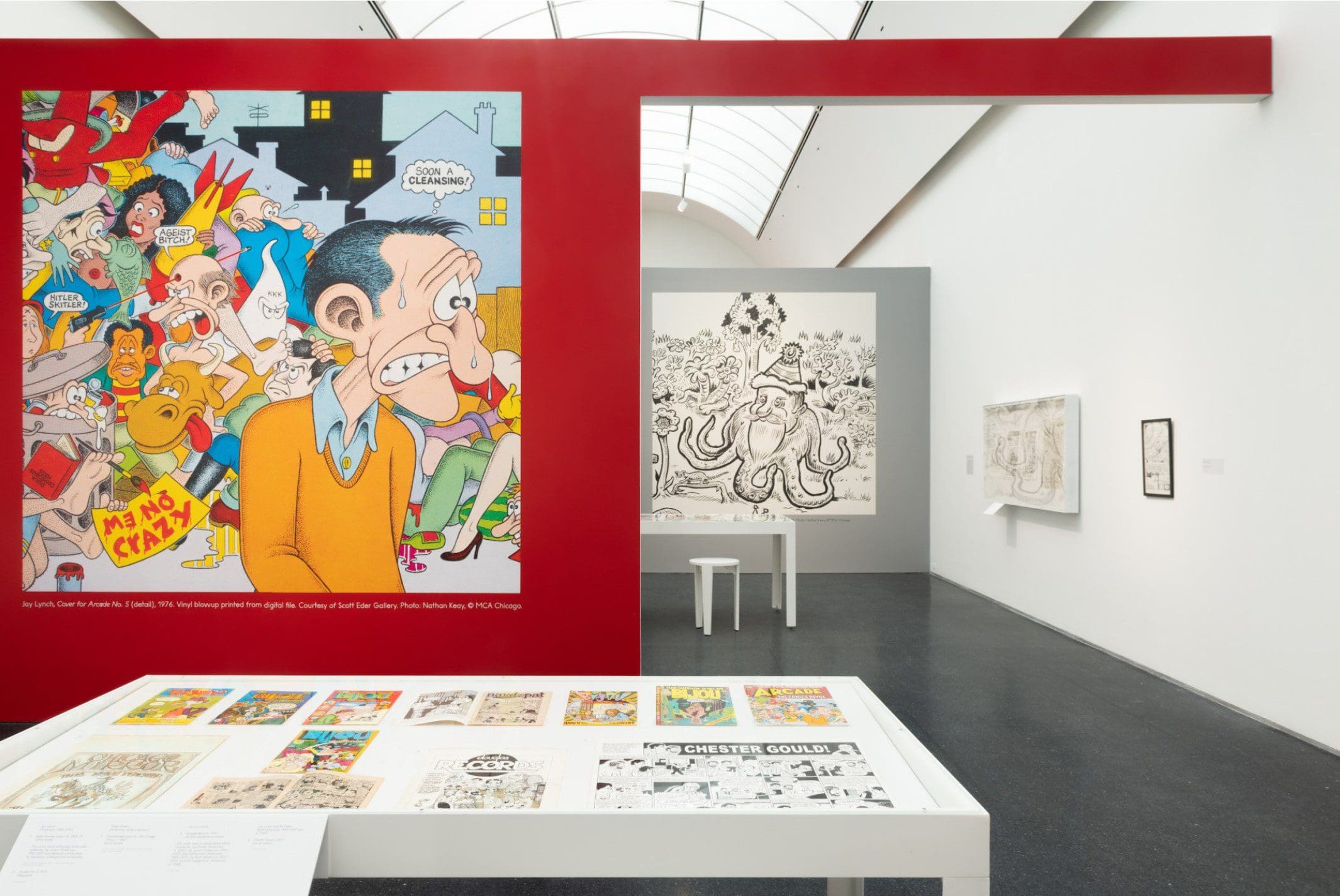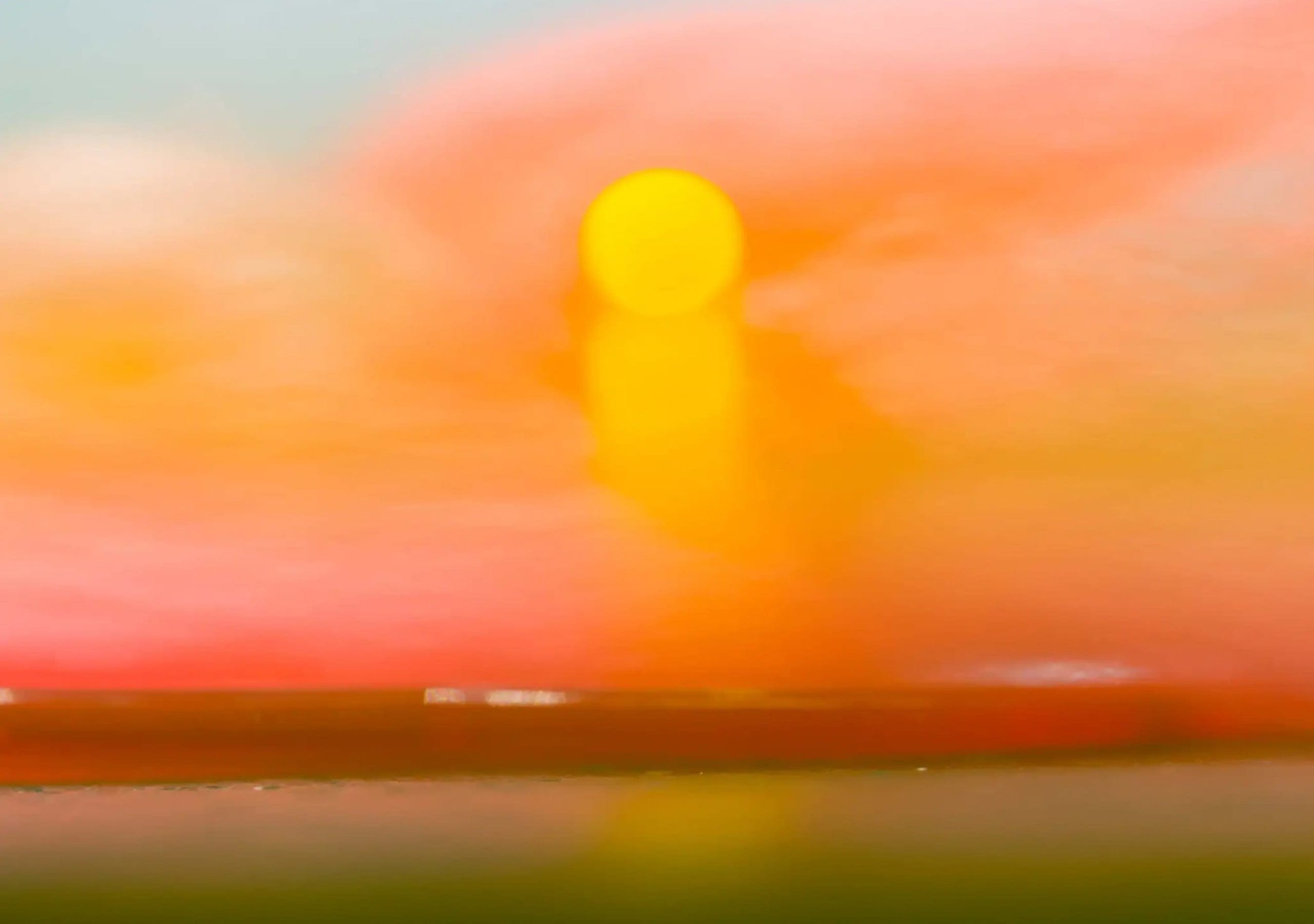Monica Ong, “Purple Forbidden Enclosure” (2019), gold and silver foil stamping, custom letterpress on Colorplan imperial blue cover, 12 x 18 inches; 16 x 22 inches framed. Produced in collaboration with Boxcar Press
NEW HAVEN, CT — Monica Ong is a 21st-century visual poet who extends the reader’s sense of what is possible. She is the author of Silent Anatomies (Kore Press, 2014), in which renowned poet Joy Harjo was selected for a First Book award in poetry. This book meshes together images, such as family photos, sonograms, and anatomical diagrams, with dictionary entries, texts and phrases she has altered, and her own writing. It begins with the author discovering that she had a “Mystery Uncle,” but, as with all family stories, larger forces are at play, and this is what Ong pursues.
One page pictures a bottle labeled “Fortune Babies.” The label includes a photograph of a man, woman, and child, and directions: “If you have difficulty conceiving, adopt a child […].” Another bottle is labeled “Chinaman” and has a family photo placed above dictionary definitions. By superimposing language and image on a bottle, Ong underscores how beliefs and ways of thinking and seeing become embedded in one’s culture, shaping the way we communicate.
Read the full article here…


